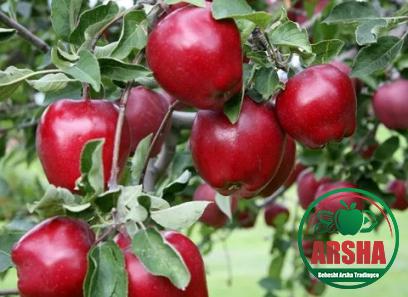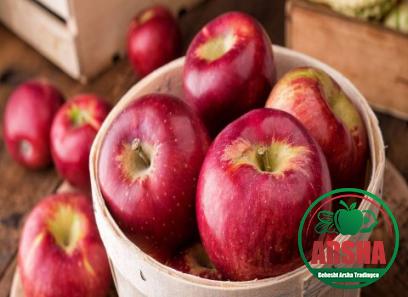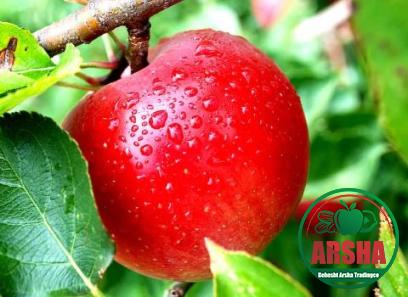Red sweet apples have captivated taste buds and conquered markets around the world with their enticing flavor and vibrant color. As consumers increasingly prioritize health and seek natural sweeteners, the demand for red sweet apples is rapidly growing. This article explores the business potential of red sweet apples, providing valuable insights for both farmers and entrepreneurs looking to capitalize on this lucrative market. 1. Understanding the Market: The global market for red sweet apples is expanding as more health-conscious consumers steer away from processed snacks and embrace fresh and natural options. The rising popularity of organic produce further emphasizes the potential of red sweet apples, as they offer a genuine, guilt-free indulgence. 2. Variety Selection: Choosing the right apple variety is crucial for success in the red sweet apple business. Varieties like Honeycrisp, Gala, Fuji, and Ambrosia are known for their exceptional taste, firmness, and attractive red color.
.
 Farmers and orchard owners should carefully consider regional climatic conditions, soil types, and market preferences to make informed decisions. 3. Cultivation and Harvesting: Growing red sweet apples requires meticulous planning and diligent execution. Farmers must ensure optimal growing conditions, including adequate sunlight, soil fertility, and balanced irrigation. Regular pruning, pest control, and disease management are essential to maintaining the quality and yield of the fruit. Harvesting should be timed accurately to ensure the apples reach the market at peak freshness and flavor. 4. Marketing and Branding: Successful businesses in the red sweet apple industry also focus on effective marketing and branding strategies. Establishing a unique brand identity, packaging the apples attractively, and emphasizing their health benefits can significantly impact consumer choices.
Farmers and orchard owners should carefully consider regional climatic conditions, soil types, and market preferences to make informed decisions. 3. Cultivation and Harvesting: Growing red sweet apples requires meticulous planning and diligent execution. Farmers must ensure optimal growing conditions, including adequate sunlight, soil fertility, and balanced irrigation. Regular pruning, pest control, and disease management are essential to maintaining the quality and yield of the fruit. Harvesting should be timed accurately to ensure the apples reach the market at peak freshness and flavor. 4. Marketing and Branding: Successful businesses in the red sweet apple industry also focus on effective marketing and branding strategies. Establishing a unique brand identity, packaging the apples attractively, and emphasizing their health benefits can significantly impact consumer choices.
..
 Engaging in social media campaigns, partnering with local retailers, and offering tastings at farmers’ markets can help create brand awareness and build a loyal customer base. 5. Diversification and Value-Added Products: To maximize profitability, entrepreneurs can explore diversifying their offerings beyond fresh whole apples. Value-added products such as juices, sauces, pies, and dried apple slices can help extend the product’s shelf life and widen market reach. Collaborating with local bakeries, cafes, and restaurants can create additional revenue streams while building strong partnerships within the community. 6. Sustainable Practices: In an era of increasing environmental consciousness, adopting sustainable farming practices can significantly enhance the business prospects of red sweet apple growers.
Engaging in social media campaigns, partnering with local retailers, and offering tastings at farmers’ markets can help create brand awareness and build a loyal customer base. 5. Diversification and Value-Added Products: To maximize profitability, entrepreneurs can explore diversifying their offerings beyond fresh whole apples. Value-added products such as juices, sauces, pies, and dried apple slices can help extend the product’s shelf life and widen market reach. Collaborating with local bakeries, cafes, and restaurants can create additional revenue streams while building strong partnerships within the community. 6. Sustainable Practices: In an era of increasing environmental consciousness, adopting sustainable farming practices can significantly enhance the business prospects of red sweet apple growers.
…
 Utilizing organic pest control methods, implementing water-efficient irrigation systems, and incorporating renewable energy sources into operations not only appeal to eco-conscious consumers but also reduce production costs in the long run. Conclusion: The red sweet apple industry presents a thriving business opportunity for farmers and entrepreneurs alike. With a growing demand for fresh, delicious, and healthy food alternatives, red sweet apples stand out as a popular choice. By understanding the market dynamics, focusing on quality cultivation, effective marketing, and sustainable practices, businesses can establish a strong foothold in this lucrative industry. With the right strategies and dedication, venturing into the world of red sweet apples can yield fruitful rewards for years to come.
Utilizing organic pest control methods, implementing water-efficient irrigation systems, and incorporating renewable energy sources into operations not only appeal to eco-conscious consumers but also reduce production costs in the long run. Conclusion: The red sweet apple industry presents a thriving business opportunity for farmers and entrepreneurs alike. With a growing demand for fresh, delicious, and healthy food alternatives, red sweet apples stand out as a popular choice. By understanding the market dynamics, focusing on quality cultivation, effective marketing, and sustainable practices, businesses can establish a strong foothold in this lucrative industry. With the right strategies and dedication, venturing into the world of red sweet apples can yield fruitful rewards for years to come.




